Imagine a world where every person has access to basic needs like food, clean water, education, and healthcare.
Unfortunately, for millions around the globe, this is impossible.

According to recent 2021-2024 statistics:
700 million people live in extreme poverty. 333 million are children.
Two-thirds of people who live in extreme poverty are in Sub-Saharan Africa or in countries that were affected by conflict.
9.9% of Canadians live in poverty.
This is why the United Nations' Sustainable Development Goals are so important.
United Nations' Sustainable Development Goals
The Sustainable Development Goals (SDGs) are 17 global objectives adopted by the United Nations in 2015 to address global issues such as poverty, inequality, climate change, and environmental degradation.
These goals aim to create a more sustainable, equitable, and prosperous world by 2030, focusing on areas like quality education, clean energy, sustainable cities, and responsible consumption.
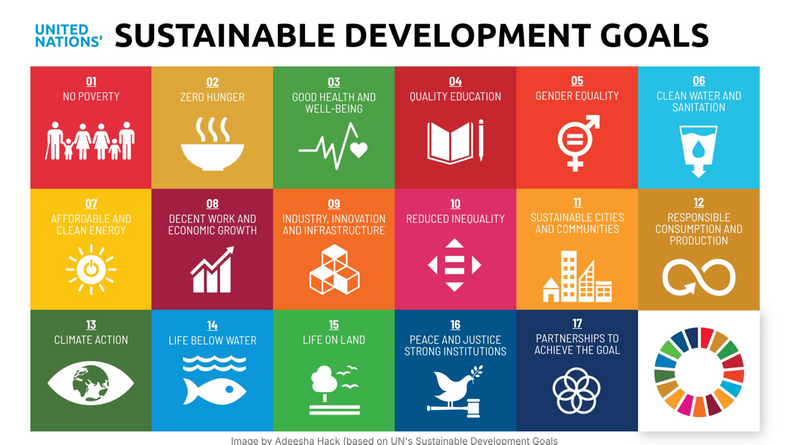 To hear an audio description of the image above, click the play button on the audio player below:
To hear an audio description of the image above, click the play button on the audio player below:
Achieving the SDGs requires global collaboration, innovative solutions, and a shared commitment to building a future that benefits both people and the planet.
Review this Byte to learn more about the UN's SDGs: What are the United Nations' Sustainable Development Goals?
United Nations' Sustainable Development Goal 1: No Poverty
Sustainable Development Goal 1 (SDG 1) aims to end poverty in all its forms by 2030. This includes targets such as:
Eliminating extreme poverty.
Ensuring equal access to resources.
Reducing the vulnerability of the poor.
As the video below explains, SDG 1 highlights that poverty is not only an economic issue, but also a barrier to achieving other sustainable goals like education, health, and gender equality.
Connection Between SDG 1 and Other SDGs
By reducing poverty, we can improve access to essentials like food, water, and healthcare, supporting other UN goals such as:
Zero Hunger (SDG 2) and Good Health (SDG 3).
Quality Education (SDG 4), Gender Equality (SDG 5), Economic Growth (SDG 8), and Sustainability (SDGs 11, 13) — yes, all those goals!
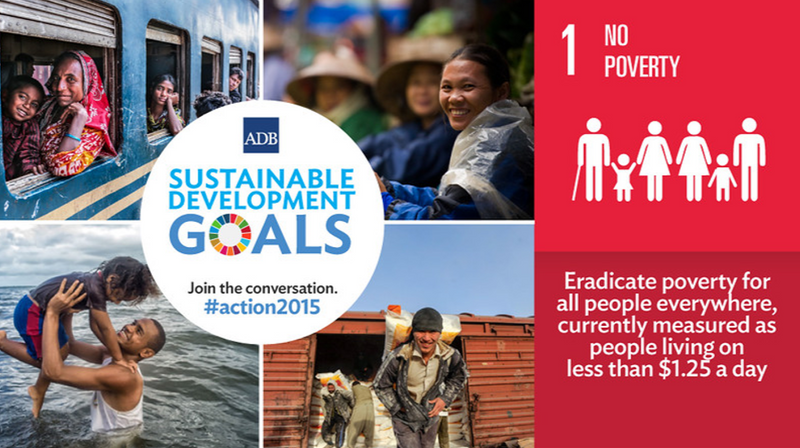 Image by Asian Development Bank via Flickr
Image by Asian Development Bank via Flickr
Ultimately, ending poverty is essential for achieving a fairer, healthier, and more sustainable world.
Why Global Poverty Persists
Poverty persists due to complex economic and social factors:
Inequality
Lack of education
Economic policy
Health crises
Climate change
Poor governance
Conflict and instability
Without addressing these factors, poverty will persist in countries and around the globe.
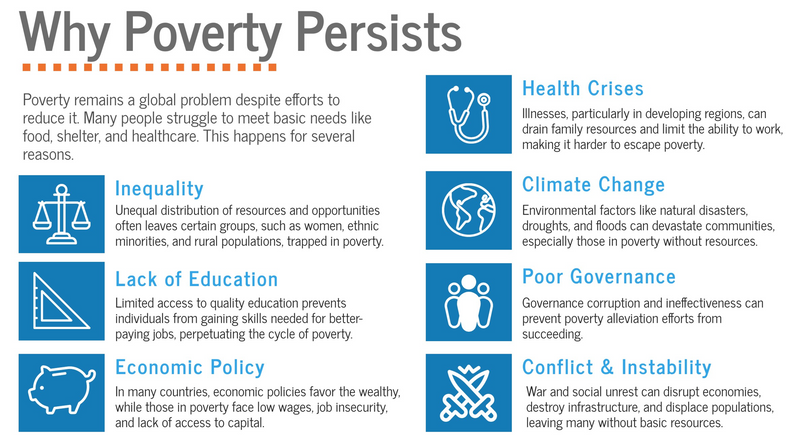 Image by Adeesha Hack via Genially. To hear an audio description of the image above, click the play button on the audio player below:
Image by Adeesha Hack via Genially. To hear an audio description of the image above, click the play button on the audio player below:
Why Should I Care About Global Poverty?
Addressing poverty is essential because it:
Ensures basic needs for everyone and the opportunity to improve their lives.
Addresses global challenges, like climate change and instability.
Creates stable societies to secure peace in nations and globally.
Enhances economic growth, so everyone (not just corporations and the wealthy) can prosper.
Builds a fair world where everyone has equal opportunities.
Ultimately, tackling poverty supports fair and equitable development for global citizens.
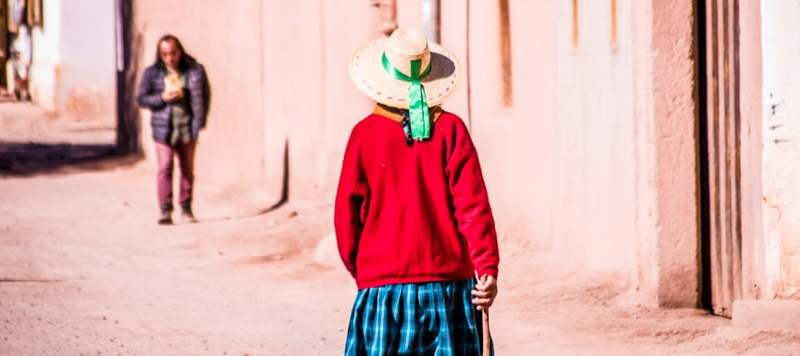 Image courtesy of The Index Project
Image courtesy of The Index Project
What Can I Do to Help?
As individuals, we can all take steps to help achieve SDG 1: No Poverty.
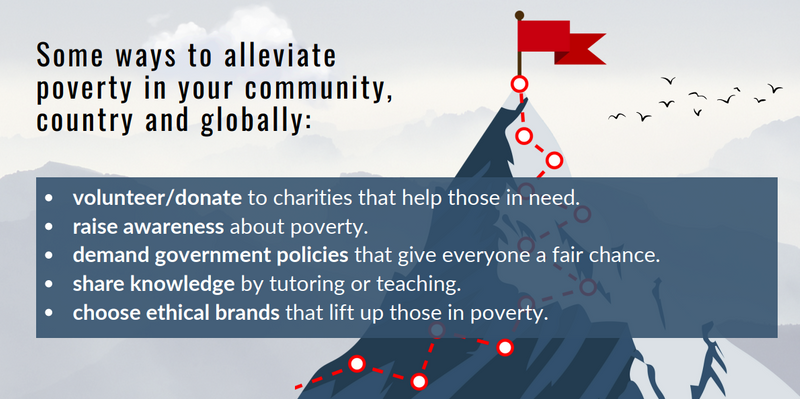 Image by Adeesha Hack via Canva. To hear an audio description of the image above, click the play button on the audio player below:
Image by Adeesha Hack via Canva. To hear an audio description of the image above, click the play button on the audio player below:
Quiz: Taking Action on SDG 1
Twenty-year old Ava lives in a community where some families struggle to make ends meet. She’s passionate about helping reduce poverty, but isn’t sure where to begin.
Ava has some skills to offer. She is enrolling in university soon, working toward a Bachelor's degree in teaching. She believes in the value of education as a way to "break the poverty cycle."
She’s considering a few different options to make a positive impact in her community. Which of the following actions would have the most direct and lasting effect on reducing poverty in her community?
A. Donate clothes to local used clothing stores, ensuring they are affordable for those in need.
B. Volunteer at a food bank to distribute food to those facing food insecurity.
C. Volunteer to teach job search skills (resume/cover letter writing) to job seekers at the local employment agency.
D. Volunteer to pick up trash on Earth Day to clean up community spaces, like parks.
Quiz
Which action would be the MOST impactful on Ava's community?
Take Action
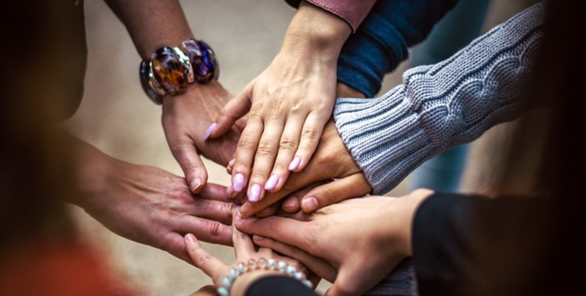 Image by ua_Bob_Dmyt_ua via Pixabay
Image by ua_Bob_Dmyt_ua via Pixabay
Your feedback matters to us.
This Byte helped me better understand the topic.
